Xpeng presents further details surrounding the G9
The Chinese electric car manufacturer Xpeng has now published the key data on the powertrains of its new flagship electric SUV G9, which is also designed for international markets. In China, the model will be offered for 309,900 to 469,900 yuan (about €44,500 to €67,500).
++ This article has been updated. Kindly continue reading below. ++
Xpeng had announced some time ago that the G9 uses an electric car platform designed for 800 volts with silicon carbide technology. Dubbed ‘XPower 3.0’ by Xpeng, the system is designed for very high charging powers of up to 480 kW (600 amps at 800 volts). This is said to be able to recharge power for up to 200 kilometres in just five minutes. Xpeng boldly states that the model is the “fastest charging production SUV in the world”. While it certainly looks to be one of the fastest, the numbers on paper will still have to be confirmed in practice.
Now the company has revealed that the electric SUV will come in three single- and two-motor variants each. According to the company, the trio with rear-wheel drive has an output of 230 kW and accelerates from 0 to 100 km/h in 6.4 seconds. The two standard rear-wheel-drive variants (RWD 570G and RWD 570E) are said to cover 570 km according to Chinese standards, while a long-range version (RWD 702E) will travel a good 700 km. Xpeng does not mention the respective battery capacity. The two standard variants are likely to differ in terms of equipment.
The three all-wheel drive variants get an electric motor on the front axle with 175 kW in addition to the same 230 kW rear-wheel drive, which adds up to 405 kW, flanked by 717 Nm of torque. The range of all three is said to be identical at 650 km according to Chinese standards. So is the acceleration of 3.9 seconds to 100 km/h. 650E Performance, as well as 650X Performance and the Launch Edition 650X, differ in the degree of networking, according to the announcement. More on that in a moment.
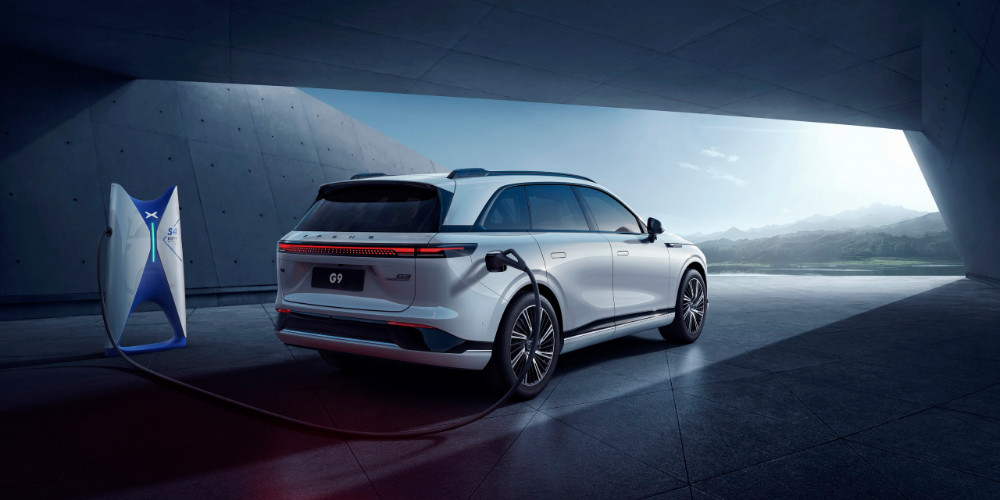
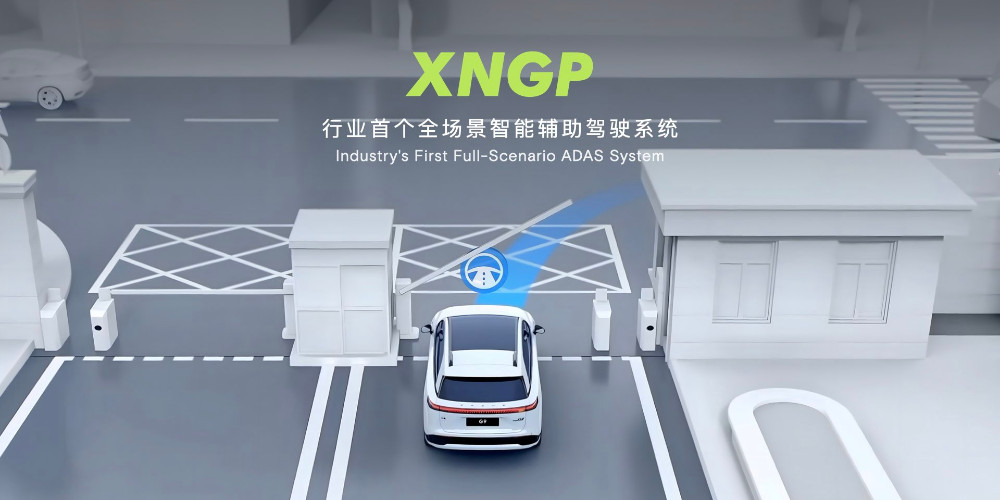
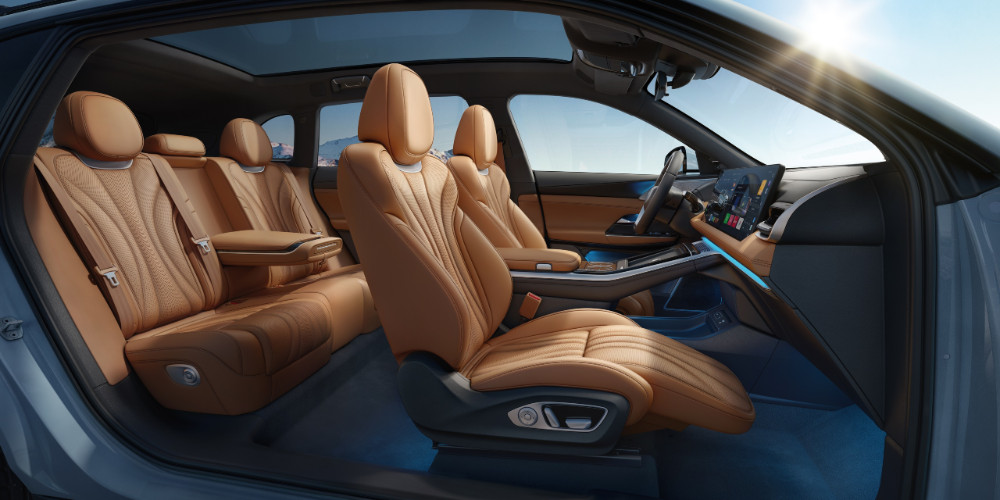

The dimensions of 4.89 meters in length, 1.94 meters in width and 1.68 meters in height apply to all variants. Xpeng specifies a maximum speed of 200 km/h. The manufacturer also announces a special air suspension system and once again focuses on software and driving assistance. In the case of the latter, the company talks about the XNGP driver assistance system. The X version of the G9 is based on two Nvidia chips with a computing power of 508 TOPS (trillions of computing operations per second), 31 sensors, a front camera and dual LiDAR sensors mounted on the front.
“G9 is the world’s fastest-charging mass-production SUV and boasts the industry’s first full-scenario Advanced Driver Assistance System. This is topped off with a dual-chamber air suspension system and a luxurious smart cabin that includes a groundbreaking 5D music experience we call Xopera. G9 is a fusion of many technical innovations woven together into an elegant design and marks a significant milestone after eight years of dedication,” said He Xiaopeng, CEO and Chairman of Xpeng. “We believe it will become the new benchmark for smart EVs, representing the last step before the realization of truly autonomous vehicles.”
Xpeng kicked off pre-sales of the G9 in its home country in August. The first deliveries there are scheduled to take place in October. The G9 – more precisely, only the exterior – was initially presented in November 2021.
Update 19 October 2022
Xpeng has started deliveries of its new flagship G9 in China – meeting the announced October deadline. As the company announced via its own app, the first deliveries are the models with one motor. As the CN EV Post writes, deliveries of the all-wheel drive model are not expected before December. A sales launch in other countries has not yet been confirmed.
Shortly after the publication of our article above, Xpeng revised the system for distinguishing the individual model variants as a result of criticism. The number still stands for the range in the Chinese CLTC cycle, but the somewhat cryptic differentiation of the trims with the letters X, P, E, N and G (in reference to the company name) was dropped. Instead, the distinction is now similar to Apple’s iPhone with Plus, Pro and Max.
heyxpeng.com, cnevpost.com (update)

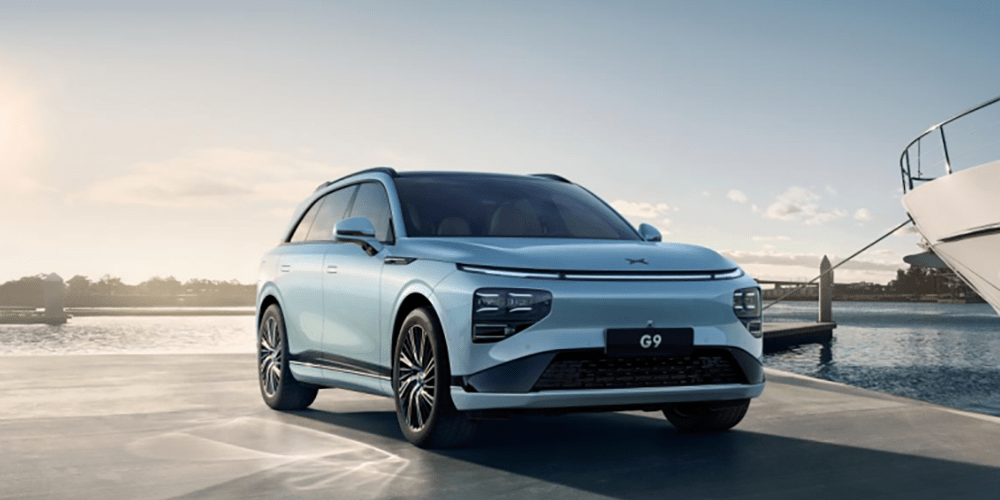


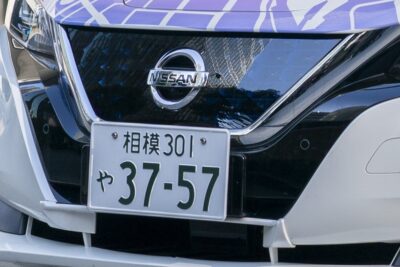
0 Comments